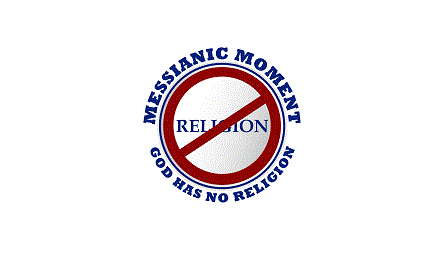Today we read of the instructions for building the Tabernacle, which are very, very detailed. The size of the supports, the types of precious metals and gems, the material the coverings are to be made from, the colors, everything about the Tabernacle is designed, defined, and described in this parashah, and in great detail.
The Tabernacle was more than just a tent- it was a symbol of the presence of God. It was situated in the very center of the campsite, surrounded by the Levites, who not only had to be close to service the tent, but they were also a buffer zone (if you will) to prevent the people from approaching too close to God and, by doing so, losing their lives.
The materials it was constructed with became more precious and fine the closer they were to God, just as we are to become more precious, i.e. holy, as we approach the Lord in our walk with Him.
The outer sections of the tabernacle were connected with rings and sockets of bronze, and as we got closer to the center of the tabernacle, where God’s presence sat, they used silver, and inside the Holy of Holies was the Ark of the Covenant, made of acacia wood overlaid with gold. So, too, the coverings: closest to God were made from fine linen woven with scarlet and blue and gold threads (these colors were very hard to make as they came from a mollusk that was very rare) whereas the outer coverings were of tanned ram skins.
Where is the Tabernacle in our lives, today? Have you ever been in the home of a Hindu person? Or a Buddhist? They have a small section of their home that is a sanctuary, a place which they have separated from everything else in their home where they worship. Although this is not the worship of the true God, it should be a lesson for us that we need to have a “tabernacle” that is centered in our life. Maybe not a physical structure, but we need a reminder of God’s presence in our everyday activities.
The Israelites could see the tabernacle; they saw the cloud over it during the day and the fire at night. It was a constant, physical and visual reminder of God. Jewish people who wear tzitzit and have a mezuzah on their doors (commanded in Numbers) have a physical, visual reminder of God’s presence. The kippah (yarmulke) is another visual reminder, although it is not commanded to be worn, same as the Star of David or a mezuzah (worn around the neck.) Christians wear a cross or sometimes a fish; there are different types of reminders of God’s presence in our lives we can have. Even a bumper sticker can serve as a reminder of God.
Maybe I should ask this: do we need a physical reminder if we have the Ruach HaKodesh, the Holy Spirit, living inside us? The tabernacle was in the center of the camp, and the Ruach lives inside us, sort of in the center of us. God outside of us, God inside of us; which is more important?
I don’t know! All I know is that if I had a constant, daily, absolutely impossible to not see or not be reminded of “thing” that kept me aware of God’s presence and kept me on track with serving God correctly, I would be a much better example of His holiness.
Let’s start to look for the “tabernacle” in our own life as we continue to become more holy. The Israelites had theirs right there, in the midst of them, but today we have to travel to get to our places of worship. I think that is somewhat problematic, but, then again, we aren’t wandering in the desert.
Or are we? Sometimes I feel that no matter what I do, no matter how hard I work, no matter how much effort I put into being a good husband, father or friend, I am just wandering through life. Going here and there, no real goal, no real end, just gadding about, aimlessly. Going through the motions of life instead of living my life.
That’s why I feel it is so important to have a “tabernacle” in the midst of our existence. A secure and stable foundation, with God at it’s center. Whether it be a synagogue down the block, a church in town, or a small, separated place of worship in a corner of the living room. Maybe I should wear tzitzit (I already wear a mezuzah around my neck), or a kippah? That won’t really make a difference, though, since I won’t see either of them and would get used to them being there.
I guess we all need to determine what the best “tabernacle” is for ourselves. And whatever it is, we need it to be there, all the time.
The Ruach is with us, it is a “comforter” (as Yeshua called it) and it can be the tabernacle in your life if you are open to always hear it. I confess I don’t always hear it, and when I do, sometimes I don’t heed it’s call. I gotta give the Ruach credit- it must be of God because it is so patient and constantly trying to get me to do what is right.
Find your “tabernacle”; and whatever it is, a place, the Ruach, a mezuzah, whatever…because it is a reminder of God’s presence in your life, make sure it is at the center of your life and that you live your life centered on it.
